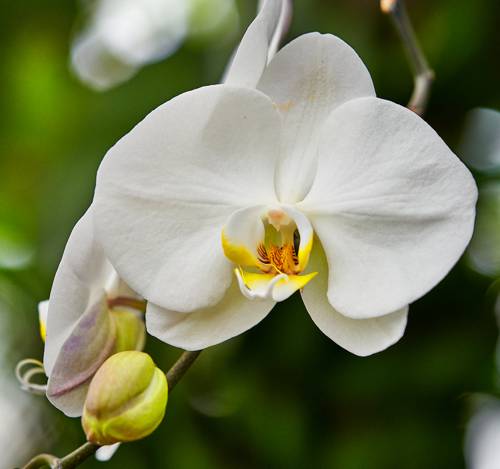
FAQ About Indoor Plant Root Health

What are the common signs of unhealthy roots in indoor plants?
Unhealthy roots in indoor plants often exhibit signs that can include a foul smell, mushy texture, and brown or black coloring. Above ground, you might see symptoms such as wilting, yellowing leaves, stunted growth, or dropping leaves. It's crucial to check the roots if these signs are consistent, as they indicate potential root rot or other issues.

How can overwatering affect the roots of indoor plants?
Overwatering is a common cause of root problems in indoor plants. It can lead to root rot, a condition where the roots become oversaturated with water, reducing their ability to absorb oxygen. This can cause the roots to decay and become mushy, ultimately killing the plant if not addressed. Ensuring proper drainage and a balanced watering schedule is key to preventing overwatering.

What steps can I take to prevent root rot in indoor plants?
Preventing root rot involves several steps: use well-draining potting soil, ensure that plant pots have adequate drainage holes, and establish a watering schedule based on the plant's specific needs rather than a fixed routine. Avoid letting the plant sit in water, and adjust watering based on seasonal changes and humidity levels.

How does the choice of potting soil affect root health in indoor plants?
The choice of potting soil greatly impacts root health. Well-draining soil helps prevent water from pooling around the roots, reducing the risk of root rot. A good potting mix typically contains a blend of ingredients like peat, perlite, vermiculite, or sand, which promote aeration and proper drainage. It's important to select soil suitable for the specific type of plant you are caring for.

Should I prune the roots of my indoor plants?
Pruning the roots of indoor plants can be beneficial, especially when repotting or if the plant is root bound. Pruning helps stimulate new growth and allows the plant to better absorb water and nutrients. However, it's essential to prune carefully, cutting away only damaged or rotten roots and being gentle to avoid unnecessary stress to the plant.

What role does proper drainage play in maintaining root health?
Proper drainage is crucial for maintaining root health, as it prevents water from accumulating at the root zone, which can lead to root rot. Plant pots should have adequate drainage holes, and using a saucer can help manage excess water. Additionally, selecting a soil mix that promotes good drainage further supports healthy roots.

How often should I check the roots of my indoor plants?
Checking the roots of your indoor plants is not always necessary but should be done when you notice signs of distress, such as yellowing leaves or stunted growth. During repotting, it's also a good opportunity to examine the root system. Regular checks, perhaps annually, help ensure roots are healthy and not root bound or affected by disease.

Can pests affect the root health of indoor plants?
Yes, pests such as fungus gnats, root mealybugs, and nematodes can adversely affect the root health of indoor plants. These pests often feed on the roots, disrupting the plant's ability to absorb nutrients and water. Managing pest infestations through organic or chemical means and ensuring proper plant care can help protect the roots from damage.

How does root health impact the overall growth of indoor plants?
Roots are integral to the overall health and growth of indoor plants, as they are responsible for absorbing water and nutrients from the soil. Healthy roots ensure that the plant can grow strong and resilient by providing the necessary support and nourishment. In contrast, unhealthy roots can lead to poor plant performance, manifested in symptoms like wilting, leaf discoloration, and reduced growth rate.

Is it necessary to repot indoor plants regularly for root health?
Repotting indoor plants can be necessary to maintain root health, particularly if the plant becomes root bound, meaning its roots have outgrown the current pot. Repotting provides space for continued growth and allows you to refresh the soil, ensuring the roots have access to nutrients and better drainage. The frequency of repotting depends on the plant species and its growth rate.

What is the best way to repot an indoor plant to support healthy roots?
To repot an indoor plant effectively, choose a pot only slightly larger than the current one to prevent overwatering. Gently remove the plant from its current pot, examine the roots, and trim any that appear damaged or diseased. Place the plant in fresh potting soil, ensuring it is at the correct depth, and water it lightly. Ensure adequate drainage to promote healthy root growth.

How can I identify if my indoor plant is root bound?
Signs that an indoor plant is root bound include roots growing through drainage holes, a thick root mass that is taking the shape of the pot, and soil drying out quickly after watering. When you remove the plant from its pot, you may notice the roots circling the container and little visible soil, indicating the need for repotting to promote healthy growth.

Can indoor plant roots recover from damage, such as from root rot?
Indoor plant roots can recover from damage, such as root rot, if caught and treated early. Treatment involves removing affected roots, ensuring the remaining healthy roots are replanted in appropriate, well-draining soil, and adjusting watering practices to prevent recurrence. Time and patience are essential, and new growth can often be seen if conditions are controlled.

What are aerial roots, and do they impact indoor plant care?
Aerial roots are roots that grow above the soil, typically seen in plants like orchids and some tropical species. They help anchor the plant and can also absorb moisture and nutrients from the air. Their presence is normal and should not be a cause for concern unless they become dry or shriveled, in which case increasing humidity or misting the plant might be beneficial.

How do different light conditions affect root health in indoor plants?
Light conditions significantly impact root health, as adequate light supports photosynthesis, which provides energy for root development. Insufficient light can lead to weaker root systems, as the plant may not photosynthesize enough to support robust growth. On the other hand, exposure to excessive light can dry out the plant, including the roots, and should be balanced according to the plant's needs.

Can fertilization impact the root health of indoor plants?
Fertilization affects root health positively if done correctly, as it supplies essential nutrients that support root and overall plant growth. However, over-fertilizing can harm roots, leading to nutrient burn and other stress conditions. It's important to follow fertilization guidelines specific to your plant type and adjust according to their seasonal nutrient needs.

What are some natural remedies for improving indoor plant root health?
Natural remedies to enhance root health include using organic compost to enrich soil, applying diluted vinegar or hydrogen peroxide to combat root rot, and incorporating beneficial mycorrhizal fungi or earthworm castings to promote soil aeration and nutrient availability. These methods offer gentle, organic alternatives to synthetic treatments, supporting root and plant health.

Why might indoor plant roots turn brown and mushy, and how can this be fixed?
Brown and mushy roots are often a sign of root rot, typically caused by overwatering and inadequate drainage. To fix this issue, remove the plant from its current pot, trim away the affected roots using sterilized scissors, and replant in fresh, well-draining soil. Adjust the watering schedule to prevent waterlogging, ensuring the plant receives only as much water as needed without oversaturation.

Are there particular plants that are more susceptible to root problems indoors?
Certain indoor plants, such as succulents, ferns, and African violets, are more susceptible to root problems due to their specific water and light needs. Succulents, for instance, can quickly rot if overwatered, while ferns require consistent moisture without saturation. Understanding each plant’s requirements and adjusting care practices accordingly helps mitigate these issues.

What are the benefits of using root stimulants for indoor plants?
Root stimulants can encourage robust root growth, enhance nutrient uptake, and boost overall plant vigor. They typically contain beneficial hormones or nutrients that promote root development and resilience. However, they should be used according to the manufacturer’s instructions to avoid over-application, which could lead to adverse effects.
